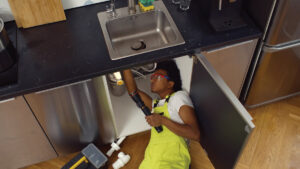By Maurice Martin, Cooperative Research Network
Look at a piece of copper and you can see why it’s been popular with artists for 10,000 years. Its reddish-orange luster enhances jewelry and other decorative art. Ancient weapon makers also found it useful — axes with copper heads date back at least 5,000 years. More recently, engineers discovered that copper was an excellent conductor of electrical current.
In the past few years, copper’s popularity has seen an uptick among another group: criminals. Whether it’s the tough economy or methamphetamine users needing money to pay for their next fix, the relatively high price of the metal has led to a wave of copper theft. The Electric Safety Foundation International (ESFI) estimates that there are more than 50,000 copper thefts from electrical utilities each year.
Substation Grounding
Copper is swiped from many places, including construction sites, warehouses and abandoned homes. In some areas, crooks drag away entire air-conditioning units so that they can remove the copper tubing at their leisure.
But copper theft from utility poles and substations carries a particular concern. Copper energizes current-carrying conductors (wires) as well as playing a key role in grounding.
Substations — which contain expensive equipment for controlling the flow of electricity from high-voltage transmission lines to your home — must be grounded to the earth to prevent damage from lightning strikes and fault currents. When your co-op grounds equipment in a substation, it makes an electrical connection to a buried network of wires, called a ground grid, that dissipates the excess charge safely over a wide area.
But burying wires causes them to corrode.
“Buried aluminum undergoes galvanic corrosion and can turn to dust in two years,” explains Emory Barber, Director of Cable and Systems Engineering at Southwire Company, one of the nation’s largest manufacturer of transmission lines. “Given the same conditions, copper can last 60 years or more.”
Despite the extreme danger that comes with entering a substation, the copper wire inside makes for an attractive target — all a thief has to do is make a couple of cuts and get out. For the relatively small value of the stolen copper, crooks leave a mess that can be very expensive to clean up.
ESFI estimates the value of copper stolen from utilities each year — whether grounding wire substations, grounding wires off poles, or even power lines themselves — to be about $20 million. But the financial impact can run three times that amount. And when copper bandits strike, not-for-profit co-ops have no choice but to pass the replacement costs on to their members.
A substation or pole that’s left ungrounded becomes a dangerous place. Sometimes the thieves touch or cut the wrong conductors, exposing themselves to lethally high voltages. Errant currents can damage electrical equipment, taking the substation or line “down” and interrupting power to consumers. The electricity can even endanger co-op employees, causing injury or death. ESFI estimates about 35 Americans die each year because of copper or other metal theft.
Foiling Thieves
Southwire has addressed copper theft with a cable it calls Proof Positive. This product comes etched with a unique identifying code, serial number, and a website address that scrap dealers can visit to see if the copper has been heisted. “The Proof Positive system enables recyclers to identify the material as stolen and alert law enforcement, often resulting in an arrest and conviction,” says Charles Holcombe, senior product development engineer with Southwire.
To prevent theft before it happens, co-ops have embarked on multi-pronged initiatives. Many have launched intensive public relations campaigns about the issue; others have partnered with local Crime Solvers chapters and posted rewards. Some co-ops are replacing much of the purloined wire with copper-clad steel. Copper-clad steel, which has been around since 1915, boasts the electricity-carrying properties of copper but contains very little scrap value. Although bendable, it can’t be cut and removed with normal tools — even hydraulic bolt cutters.
Also, keep in mind that no one should be in an electric co-op substation except trained employees. Report any suspicious activity to local law enforcement and your electric cooperative. Your diligence can help stop criminals and may even save a life.
Maurice Martin is a senior program manager for the Cooperative Research Network, a service of the Arlington, Va.-based National Rural Electric Cooperative Association.






